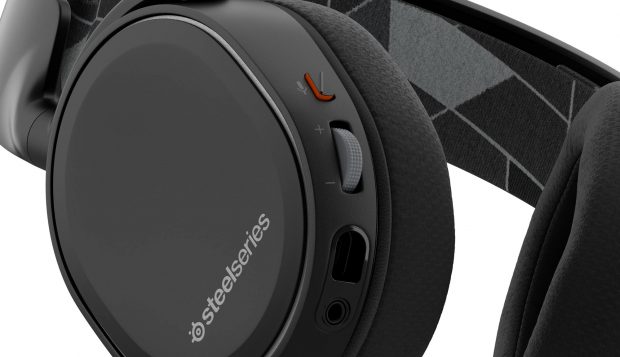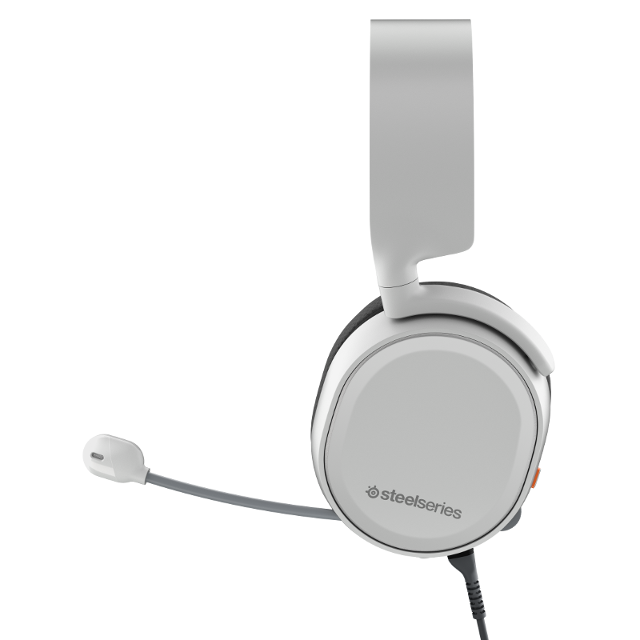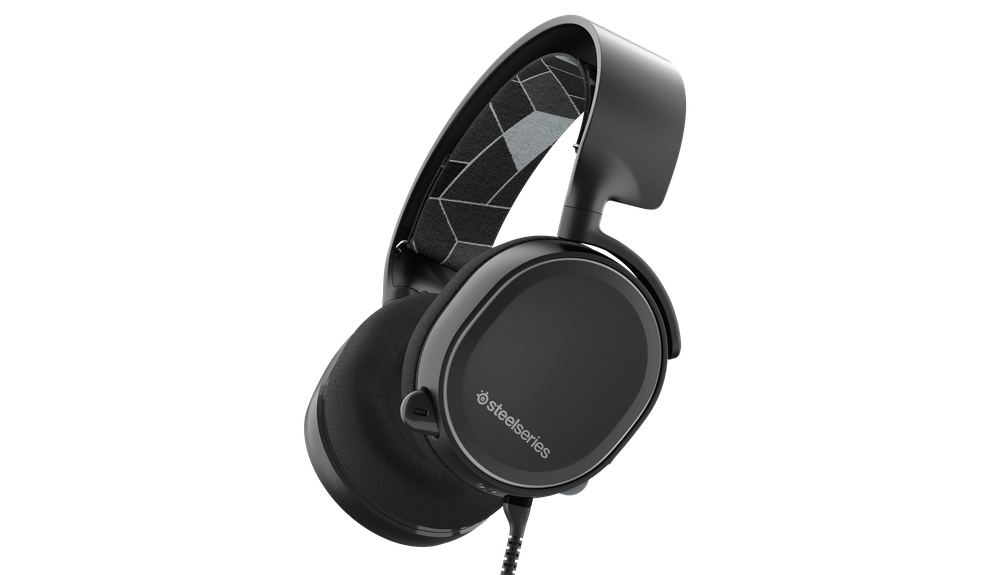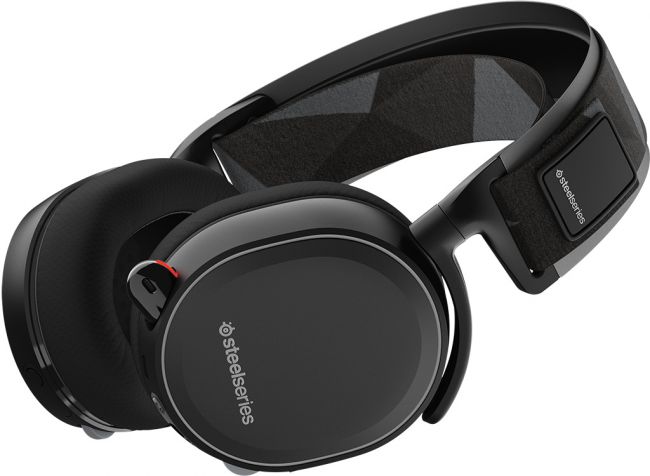There’s no doubt that SteelSeries makes quality gaming products. From keyboards to headsets to mice, the Danish peripheral manufacturer has a history of providing gamers and mediaphiles with well-designed tools for effortless entertainment consumption.
But with the Arctis 3 Analog Headset, that’s a somewhat different story.
It isn’t a bad headset. But the Arctis 3 is a competent and sometimes brilliant budget headset that feels like an afterthought in the Arctis line (especially when compared to the impressive Arctis 7 headset, which has excellent sound and comes packed with functionality).
Coming at the tail-end of the Arctis line, the Arctis 3 offers users adequate sound and ridiculous comfortability in a small and easily portable package. It’s biggest barrier to entry is its ease of use, as adopters will have to jump through myriad hoops to get the best this headset has to offer.
The Arctis 3 Analog Headset is Modern and Crazy Comfortable

The first thing that jumps out about the Arctis 3 is that it’s sleek and modern. Eschewing the visual pomp and circumstance that sometimes defines other headsets in its $80 price range, the Arctis 3 is instead a mid-sized setup sporting over-the-ear cups and a smooth metal casing that comes in either minimalist white or black.
The understated design continues on the left ear cup, where users will find the volume wheel and mute toggle, as well as the main cable jack and headphone share jack. It’s interesting none of these controls or inputs were moved to the right ear cup. But nonetheless, the buttons never feel cramped and the jacks are easy to locate without ever taking the headset off.
But when you do need to take the Arctis 3 off, it’s highly portable. Because its flexible earpieces are able to rotate and lie flat, sticking them in your backpack or overnight bag is a cinch. What’s more, if you’re taking a break and draping the headset over your neck, you can lay the ear cups flat on your chest, allowing you to move your head about more comfortably.
But the Real Star of the Show is The Arctis 3’s Ski Goggle Headband
Made for marathon gaming sessions, the Arctis 3’s proprietary Ski Goggle Headband makes it the most comfortable headset I’ve ever worn. There’s no hard plastic irritating your dome here. Instead, the soft and flexible headband evenly distributes the headset’s weight and pressure across your head.
Complementing that, the headset’s soft ear cups are snug, yet breathable. Unlike other headsets on the market that get uncomfortable and sweaty around the ears after several hours of wear, the Arctis 3 provides all-around lasting comfort for those marathon gaming sessions of five, eight, and 12 hours.
Unfortunately, the Arctis 3 Isn’t As Easy to Use As Advertised
Though it’s marketed as a plug-and-play headset, the Arctis 3 suffers from a few usability issues out of the gate. Users can easily change out the dual 3.5mm extension cable for the 4-Pole 3.5mm adapter when switching from PC to mobile or console. And the main headset cable, which uses USB technology, effortlessly slots into the port nestled in the left ear cup.
But the process of setting up the Arctis 3 on your PC is a kind of waking nightmare, especially when compared to the ease of use provided by its wireless cousins — the Arctis 5 and the Arctis 7. Since there’s no USB dongle for the Arctis 3, you’ll have to jump through a few hoops to use the SteelSeries Engine 3 equalization software.
If you were using the Arctis 5 or Arctis 7, installing and adjusting your sound settings using the Engine 3’s equalizer would be intuitive and easy. All you’d have to do is plug the headset in, open the Engine 3 software, and start adjusting your EQ settings. However, the Arctis 3 is a different story. You’ll have to:
- Plug the headset into your PC using the dual 3.5mm extension cable
- Open your browser and visit the SteelSeries website
- Create an account
- Verify your email address
- Log in to your account
- Download the Engine 3 software
- Install the software on your computer
- Restart your computer (probably)
- Launch the software
- Log in to your account again
- Start using the EQ
It’s all quite cumbersome and frustrating, especially when it’s required to access a key component of the headset’s functionality.
But Once You Do Get Into the Engine 3 Software, the Sound Options Are Robust
While SteelSeries Engine 3 might be a pain to install when you’re using the Arctis 3 headset, there’s no way you’ll be able to use these cans to their fullest without it.
With the ability to create more than 150 individual configurations, the Engine 3 software lets you tweak the sound settings for just about every game in your library. On top of that, the program boasts an array of competent presets that can get your equalization creation kicked into high gear.
With the capability to use either stereo or Dolby 7.1 surround sound on any of your presets, the Arctis 3 allows for a wide breadth of sound options for movies, music, and video games. Testing it with Battlefield 1, the surround sound wasn’t as robust and visceral as that found on the Logitech G533, and I wasn’t able to succinctly dial-in enemy positions like I was with Logitech’s headset.
But when playing something less intensive, such as Northgard or Subnautica, the dynamic was dramatically improved over the headset’s stereo offering. Clanking swords reverberated through my ears, while crashing waves sounded crisp.
The Arctis 3’s Mic is Clear and Responsive

The SteelSeries Engine 3 software is where you’ll also adjust your on-board mic settings with dynamic compression options, as well as a noise gate and noise reduction panels. I specifically liked that I was able to test the mic out directly in the program, instead of making my teammates’ ears bleed in party chat.
Whether I was on my PC or Mac chatting with a party member, or if I was on my iPhone 6S+ talking to colleagues and friends, the mic on the Arctis 3 was always crisp and bright. Not once did my voice crackle or come through clouded. Fully retractable, the Arctis 3’s mic is rich and full of body, even if professionals might want something with a bit more power.
The Verdict
The Arctis 3 isn’t the best of the SteelSeries lineup, but it’s not trying to be. Instead, it’s a great option for the gamer on a budget, offering good sound quality for a decent price.
I can’t recommend the Arctis 3 without a few caveats, however. As I mentioned, it’s a bit difficult to set up on PC, and the stereo sound quality for console — specifically the PlayStation 4 and Nintendo Switch — is fickle at best. Sometimes the sound was rich and full of vigor, while other times I could barely hear without pumping the volume to maximum. On top of that, there are no in-line controls for volume or chat, meaning you have to use the controls located on the left earpiece.
If you can’t afford anything more than $80, the Arctis 3 is one of your better options. But if you can, shell out the extra $20 for Arctis 5, which is a more compelling and versatile version of the Arctis 3 (with RGB options too).
[Note: An Arctis 3 review unit was provided by SteelSeries for the purpose of this review.]








Published: Mar 27, 2017 10:24 pm